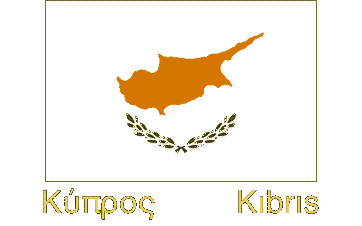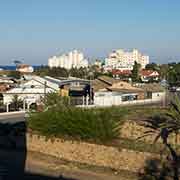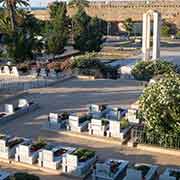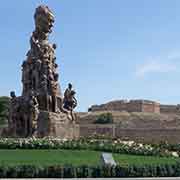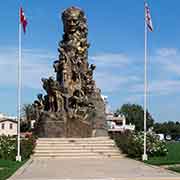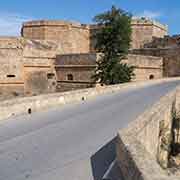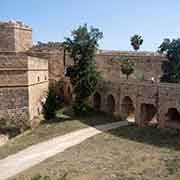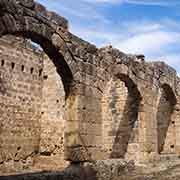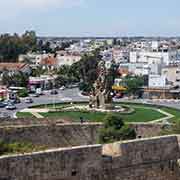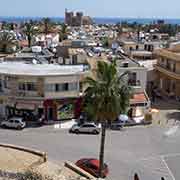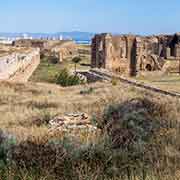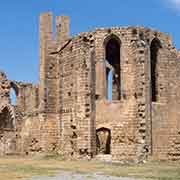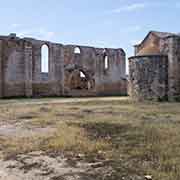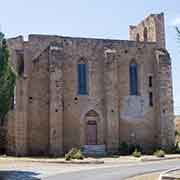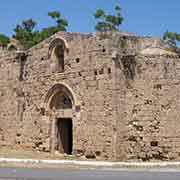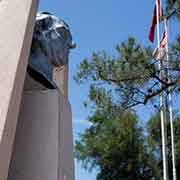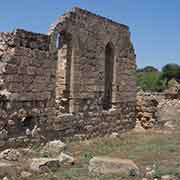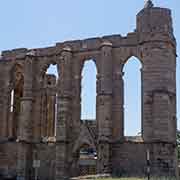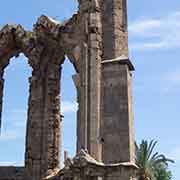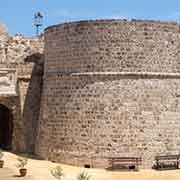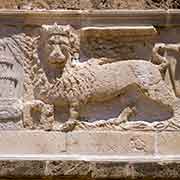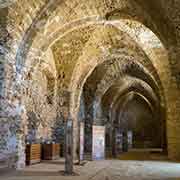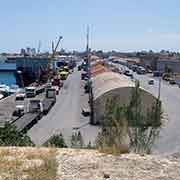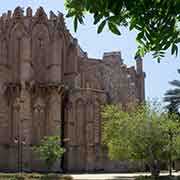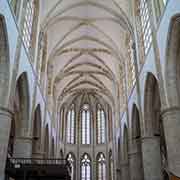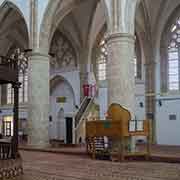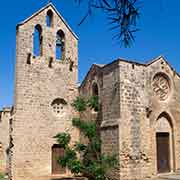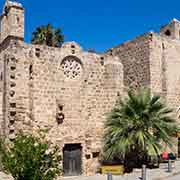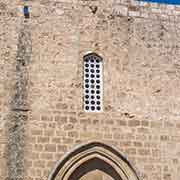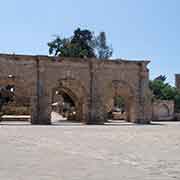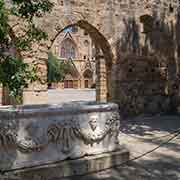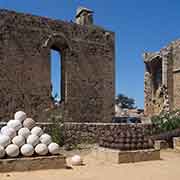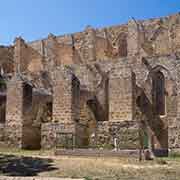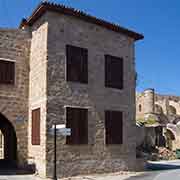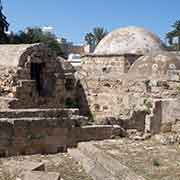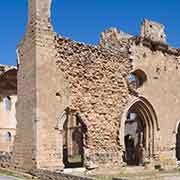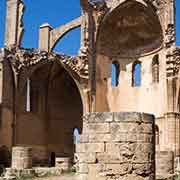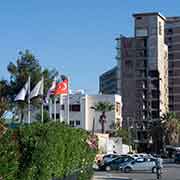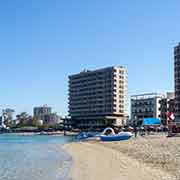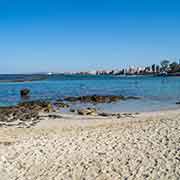Photos of Gazimağusa (Famagusta), a walled city on the east coast, Cyprus
Gazimağusa (Famagusta), a walled city on the east coast
Famagusta, in Turkish Gazimağusa or Mağusa and Greek Ammóchostos (Αμμόχωστος), is a harbour city on the east coast of Cyprus. It was its most important port during the Middle Ages, especially when the maritime republics of first Genoa and then Venice dominated the island.
you may then send it as a postcard if you wish.
The city was founded after the ancient city of Salamis was devastated by an earthquake around 274 BCE. It was named Arsinoe after the Greek Ptolemaic Queen Arsinoe of Egypt. Then, it became known as Ammóchostos (‘hidden in the sand’) that was pronounced as ‘Famagouste’ by the French Lusignans and ‘Famagosta’ by the Italians. The French Lusignans, during their rule of the Kingdom of Cyprus, developed the town and built the soaring churches, later turned into mosques or allowed to crumble.
The port was briefly seized from the Lusignans by the Genoans in 1372 but in 1489 came under Venetian rule. They built the city walls and modified the castle, that had been built in 1310 to protect the port against possible enemy attacks. It is now called Othello Castle, as it inspired Shakespeare to write his tragedy. The city was the last to fall under the onslaught of the Ottoman Empire and had to surrender in 1571.
Under the Ottomans, the Latins were expelled, and Greeks were banished from the walled city: they settled in what became the town of Varosha. The Cathedral of St. Nicholas was converted to a mosque (now known as Lala Mustafa Pasha Mosque), and it became a Muslim Turkish city. During British rule, the Turkish aspect of the town declined, and Greeks became the majority. After independence, Famagusta developed towards the south, and Varosha became its administrative and tourist centre. It all ended on 14 August 1974 when the Turkish army invaded, and Famagusta was bombed by Turkish aircraft. The entire Greek population of the city had to flee; dozens of civilians, including tourists, died. Varosha was fenced off by the Turkish military and remains so today.


